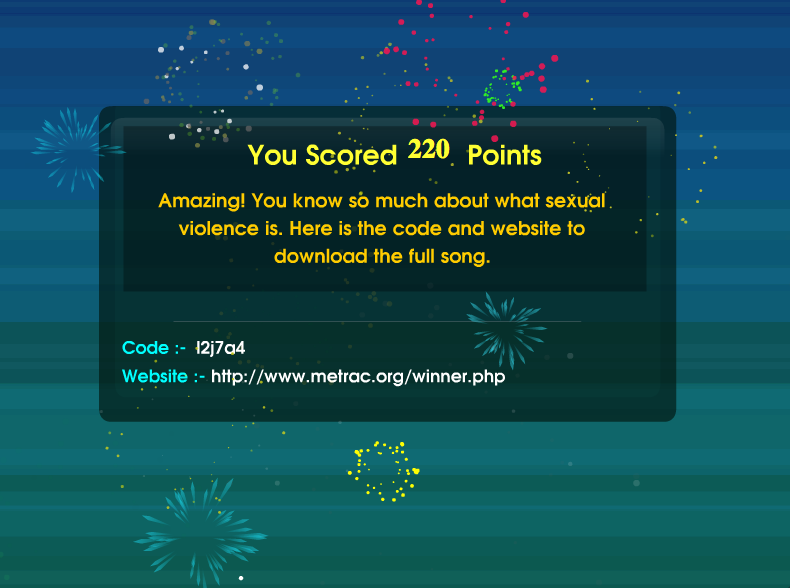Introduction
“What It Is” is a Flash game that teaches the dangers of the different types of sexual violence to youth ages 12 to 25 years old.
Below is a detailed analysis of this game roughly following Brian Winn's1 Design/Play/Experience framework, including:
Learning
“What It Is” concentrates on: Identifying different forms of sexual violence
- Relaying to the player unacceptable behaviors
- Shining a light on stereotypes and common public views/beliefs that diminish the seriousness of sexual violence
- Teaching players how to be there for victims of sexual violence.
- Providing a database of information for the prevention of sexual violence and support for victims
Storytelling
The avatar of the player is a generic man symbol. This avatar walked around the level collecting information about the dangers and prevention of sexual violence (marked by red exclamation marks) and is asked questions by other characters in the level. The other characters are rendered and colored to represent a full spectrum of youth, expressed through fashion, hair color, cultural The game doesn’t have a prelude to the game, however, each level has a scenario that identifies the topic of questions and information that will be given to the player. Some examples include:
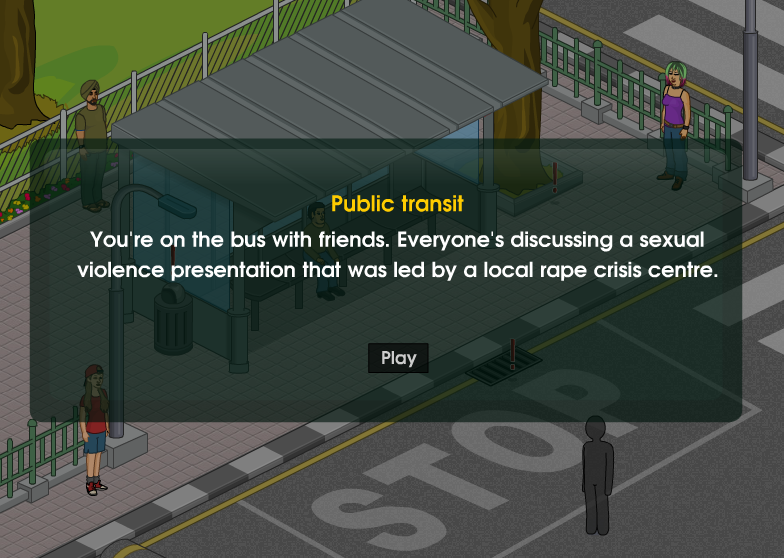
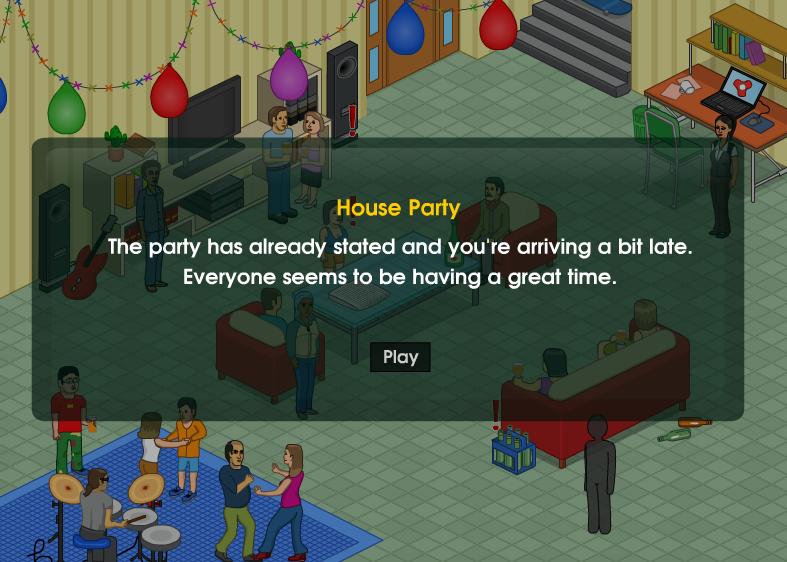
The questions allow players to reflect on the content before answering, especially because there is no time limit. Usually the set up of answers include: a couple common and incorrect views about sexual violence, the correct answer, and an answer that would cross the line in the situation, for example:
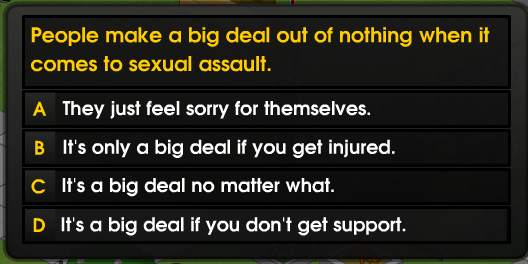
Gameplay
The player moves the generic man symbol around the isometric stage using the arrow keys. Collisions with red exclamation points will prompt a fact about sexual violence to appear in a window. The player is awarded 5 points for every fact he or she collects. Encounters with people will lead to questions popping up on screen. The player uses the mouse to select his or her answer. If it is correct, the player is awarded 20 points. If the answer is incorrect, the player loses 1 of 3 chances. The player loses if all his or her chances are gone. To complete a level, the player must answer all the questions. The player wins the game once 3 levels are completed and is awarded with a code for an MP3 download of a song about sexual violence should he or she has enough points.
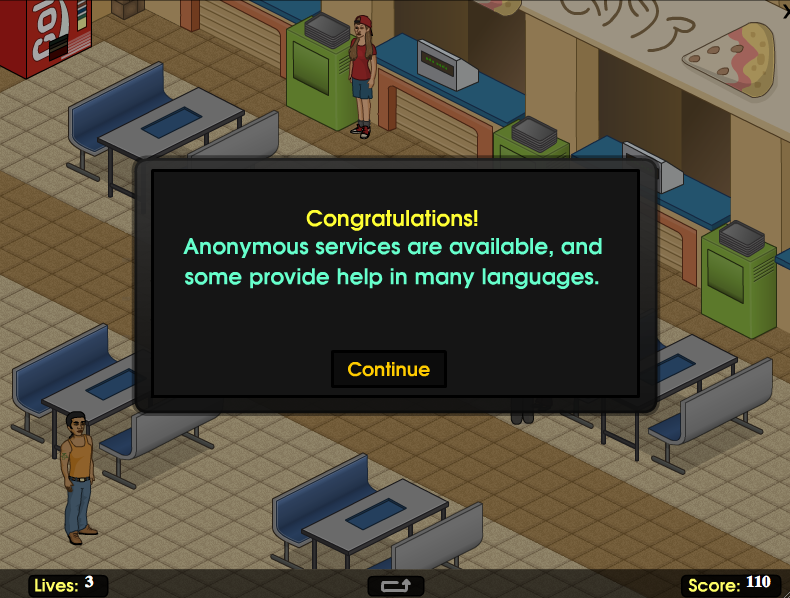
User Experience
Flash was a good choice for this game because it enables the game to easily reach a larger audience as it intends. Using a perpendicular input (the arrow keys) to move a character on an isometric plane (which mimics an X shape) took a bit of getting used to. The controls may have been better as a point and click, allowing the player to direct the avatar by clicking on the game scene to move. Perhaps the use of an avatar isn’t necessary to immerse the player in this case. The player may benefit from simply clicking on the exclamation marks and people, allowing quicker access to information and questions. Walking around the game scene didn’t really seem to add to the game play, and because the menus kept popping up, the interface never really achieved transparency. I feel like the walking became banal quickly, and the game soon turned into a question and answer game. By removing the walking aspect, the designers may have been able to incorporate more knowledge on the subject into the game. The scenes and characters within the scenes did provide an example environment for the questions and information. But the game lacked an emotional connection. I feel I would have acquired the same information through a pamphlet about sexual violence.
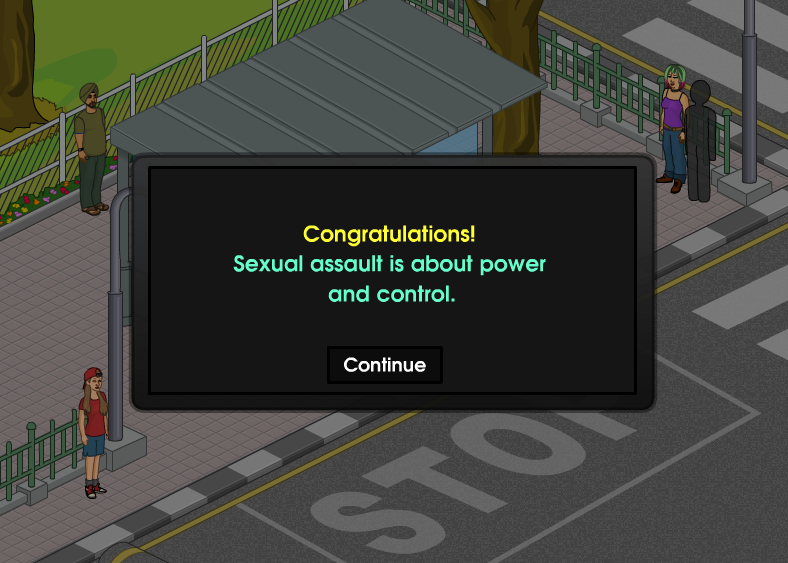
Technology
The game was built in Flash. This engine is adequate for the educational goals of the game because it allows the game to be accessed online by a large audience by computer on Java-enabled mobile phones in school and at home, which may be handy in case of in school seminars against sexual violence.
Assessment
I found no assessments of the game. This game could be assessed as a teaching tool in seminars regarding sexual violence through pre- and post-tests used to identify the knowledge of the audience before and after the games. Another way of assessing the achievements of the game would be to inquire with the provided resources if they ask how people were directed to them. If they receive calls from users who say they learned about these organizations from the directory on “What It Is,” then the game is successfully proliferating knowledge of available resources aimed at diminishing sexual violence.
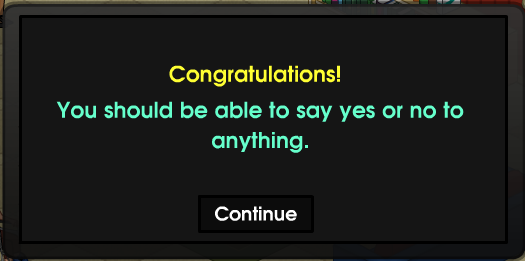
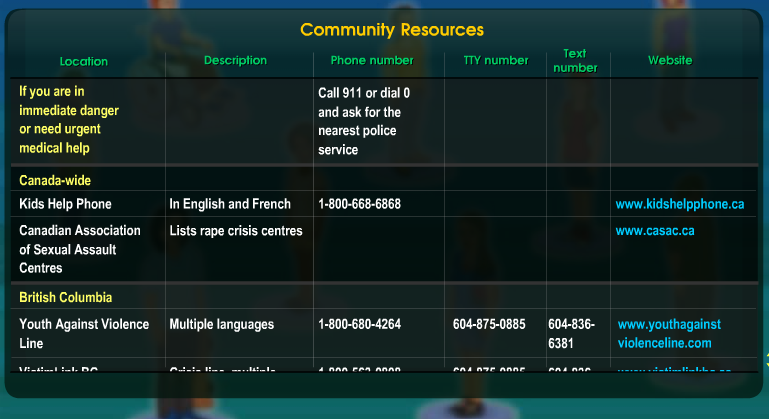
Conclusion
While the game attempts to educate youth in their preteen to undergraduate years about sexual violence, it lacks an immersive quality and emotional connection that results in the game becoming a tedious question-answer/fact collecting game. While the intention of the game is good, it lacks a method of providing examples and allowing for transference from in-game to real life. All in all, this game reads like an information pamphlet about sexual violence. I believe an interactive seminar on the topic would be a better method than this game of presenting the knowledge, research, and information that went into making this game.
